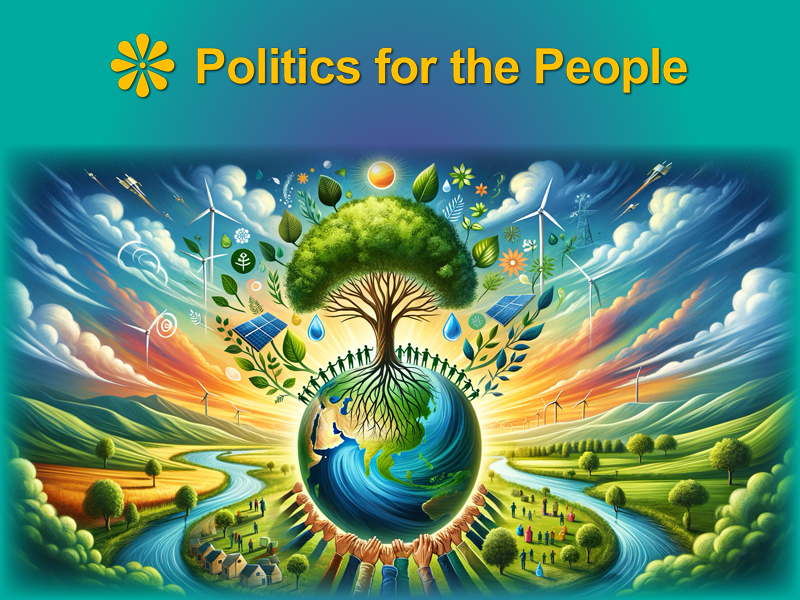Introduction: The Crucial Balance Between Growth and Sustainability
In a world striving for economic growth, the words of Margaret Mead, “We won’t have a society if we destroy the environment,” highlight a profound truth. Our relentless pursuit of economic expansion and the exponential growth of the global population are not only deepening socio-economic disparities but also devastating the ecosystems that sustain life. The need to pivot towards sustainable development models, such as Doughnut Economics, has never been more urgent.
The Earth: Our Endangered Life Support System
The Alarming Rate of Environmental Degradation
Our planet’s natural environments are under unprecedented assault. Each minute, vast expanses of rainforests — crucial for absorbing carbon dioxide — are destroyed, equivalent to twenty-seven soccer fields. This deforestation drives species to extinction and disrupts rainfall patterns across the globe. Meanwhile, our oceans absorb increasing amounts of CO2, leading to acidification that kills marine life and disrupts fisheries, upon which billions of people rely for food and livelihood. On land, the spread of deserts and the intensification of extreme weather events, from hurricanes to heatwaves, herald a destabilized climate that threatens all forms of life.
Population Growth and Resource Pressure
The world’s population is projected to reach ten billion by 2050, intensifying the strain on Earth’s resources. This growth amplifies challenges such as water scarcity, waste management, and energy consumption. Addressing population growth requires a delicate balance of policies that respect individual rights and cultural diversity while promoting sustainable practices. Education, particularly in family planning and women’s health, is critical, as is the development of economies that decouple growth from environmental impact.
Doughnut Economics: A Beacon of Hope
Redefining Economic Success

Kate Raworth’s Doughnut Economics challenges the foundational economic principles of continuous GDP growth, proposing a model that balances essential human needs with the planet’s ecological limits. This model envisions a “safe and just space for humanity” that works within a doughnut-shaped framework. The inner ring stands for the smallest standards for a decent life, derived from the world’s agreed-upon social thresholds, while the outer ring stands for the ecological ceilings that we must not breach to preserve Earth’s systems.
A Holistic Approach to Global Economics
The Doughnut model suggests that our economic activities should remain within these two boundaries — ensuring that no one falls short on life’s essentials like food, water, and housing, while not exceeding the ecological limits that protect climate stability, soil health, and biodiversity. Implementing this model requires transformative changes in how we measure economic success, invest in public goods, and legislate corporate behaviour.
The Urgency of Now: Actions for a Sustainable Future
Promoting Sustainable Practices Across Industries
Sustainability must become the cornerstone of all industrial activities. From agriculture that embraces permaculture and regenerative practices to manufacturing that prioritizes recycling and minimal environmental impact, every sector needs to innovate towards sustainability. Governments and businesses must collaborate to create incentives for sustainable practices and penalize unsustainable behaviours.
Investing in Green Innovation
Transitioning to a sustainable future requires substantial investment in green technologies. Whether it’s renewable energy, biodegradable materials, or electric vehicles, innovation can lead to a reduction in our ecological footprint. Public funding and private investment in research and development are crucial for pioneering the technologies that will drive this new economy.
Empowering Local Communities
Local communities often hold the key to preserving the environment. By empowering local groups through education, resources, and legal support, we can enable tailored, sustainable solutions that respect local ecosystems and cultural traditions. Community-led conservation and sustainable resource management practices have proven effective globally and should be expanded.
Strengthening Legislation for Sustainability
Robust legal frameworks are essential to ensure businesses and individuals adhere to sustainable practices. This includes enforcing environmental regulations, supporting international agreements, and fostering transparency in corporate operations about environmental impact.
Stabilizing Population Growth Through Empowerment
Policies aimed at stabilizing global population growth should focus on enhancing education and healthcare, particularly for women, and promoting economic opportunities that support smaller family norms. These measures should be implemented ethically and voluntarily, respecting personal freedoms and cultural differences.
Conclusion: The Need for Collective Action in Shaping a Sustainable Future
The challenges of achieving sustainable growth are immense, but the tools and knowledge exist to make this possible. Doughnut Economics offers a practical framework for a prosperous future that respects our planetary boundaries.
Call to Action: Be Part of the Solution
What actions can you take to support sustainable economic practices in your community? How can we collectively ensure that our growth does not come at the expense of our planet?
Join the movement towards a sustainable future. Share your thoughts, and let’s drive change together. Share this article with your contacts and on social media to spread the word.
References:
- Human activity jeopardising Earth’s life-support system: https://www.rnz.co.nz/news/world/497969/human-activity-jeopardising-earth-s-life-support-systems-study
- Earth ‘well outside safe operating space for humanity’, scientists find: https://www.theguardian.com/environment/2023/sep/13/earth-well-outside-safe-operating-space-for-humanity-scientists-find
- Exploring doughnut economics: https://www.kateraworth.com/doughnut/
- What You Can Do to Promote Sustainability: https://www.scranton.edu/sustainability/what-can-you-do.shtml
- What is Environmental Sustainability: https://study.com/learn/lesson/environmental-sustainability-examples.html
- Research Sustainability Guidelines: https://cdn.csu.edu.au/__data/assets/pdf_file/0009/3185514/Sustainable-Research-Guidelines.pdf
- Sustainability: https://www.csiro.au/en/research/environmental-impacts/sustainability
- Sustainable Environment Research: https://sustainenvironres.biomedcentral.com/
- Why population growth maters for sustainable development: https://www.un.org/development/desa/pd/sites/www.un.org.development.desa.pd/files/undesa_pd_2022_policy_brief_population_growth.pdf
- Solutions to overpopulation and what you can do: https://mahb.stanford.edu/library-item/solutions-overpopulation-can/
- Beyond GDP: making nature count in the shift to sustainability: https://www.unep.org/news-and-stories/story/beyond-gdp-making-nature-count-shift-sustainability
- Going beyond GDP to measure what really matters: https://ec.europa.eu/research-and-innovation/en/horizon-magazine/going-beyond-gdp-measure-what-really-matters

